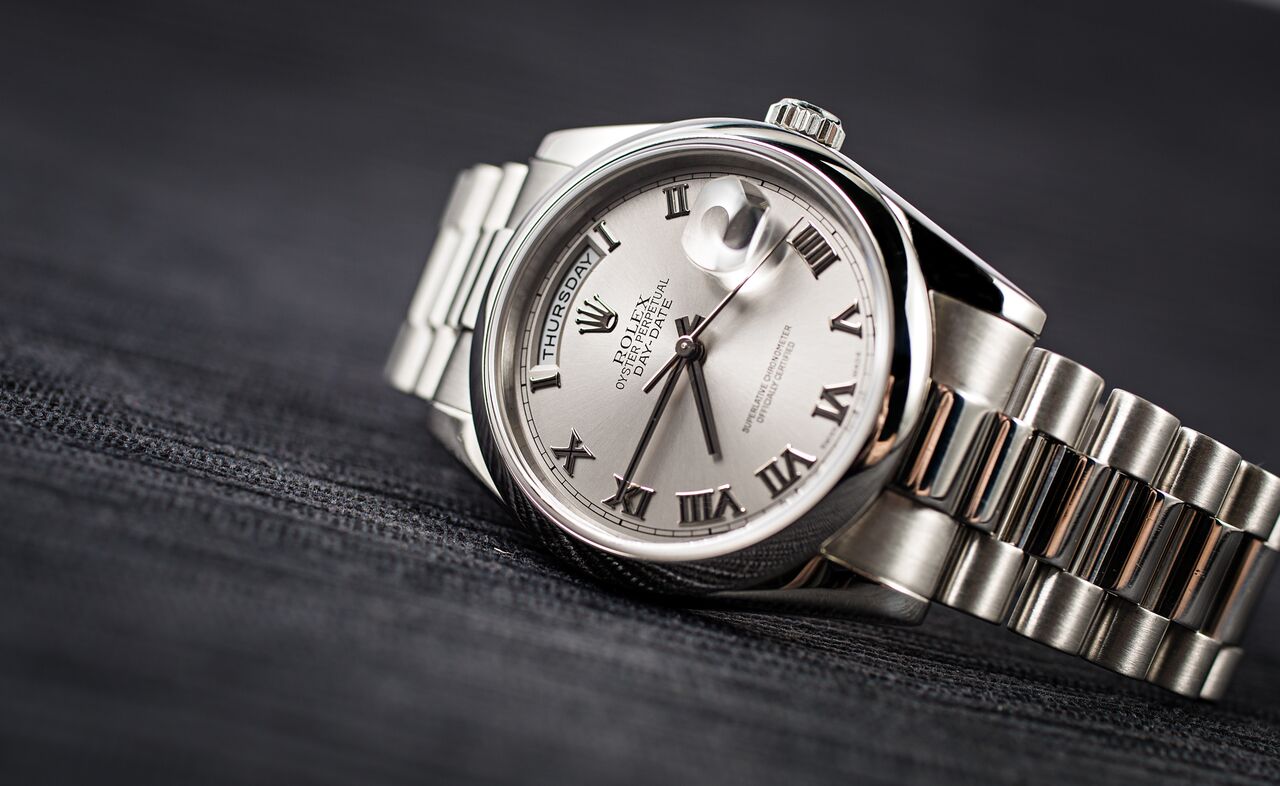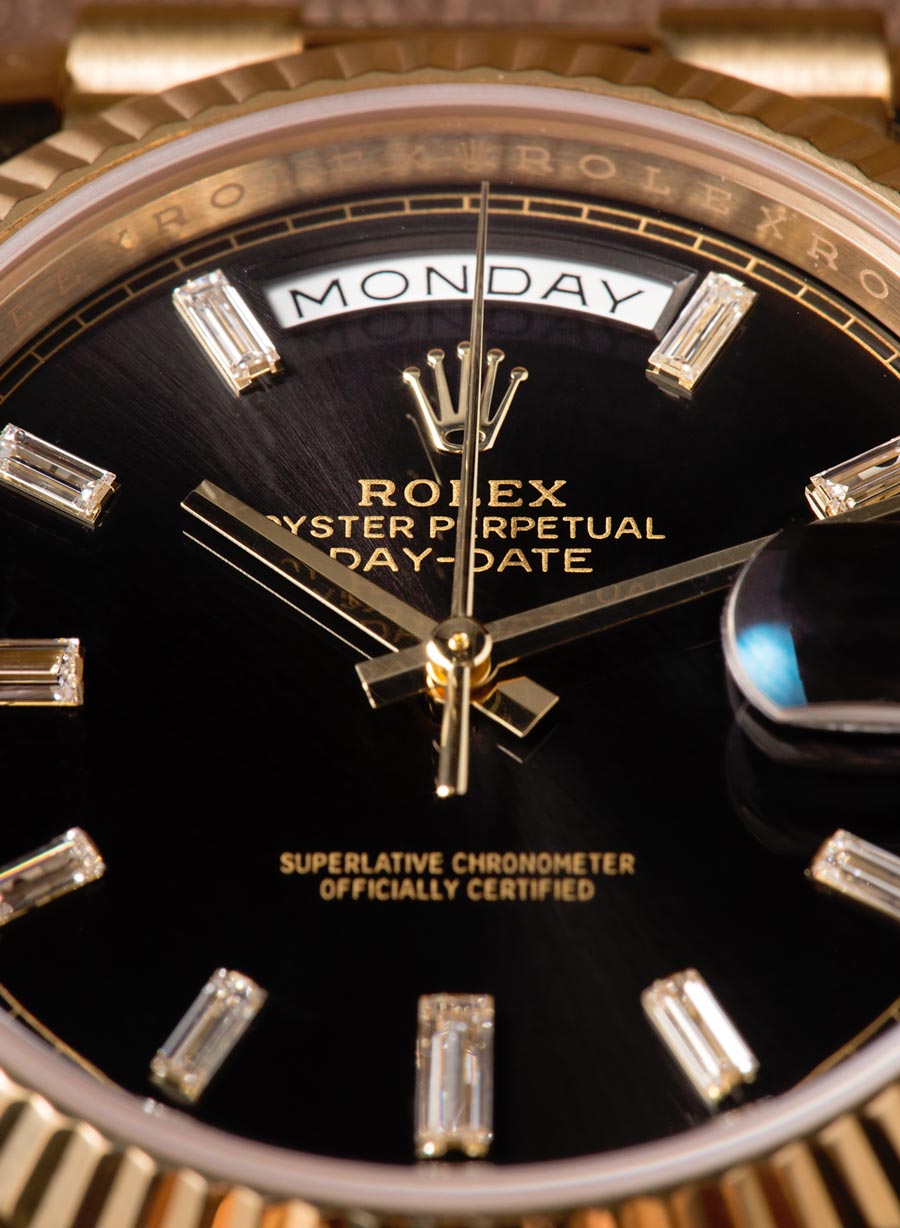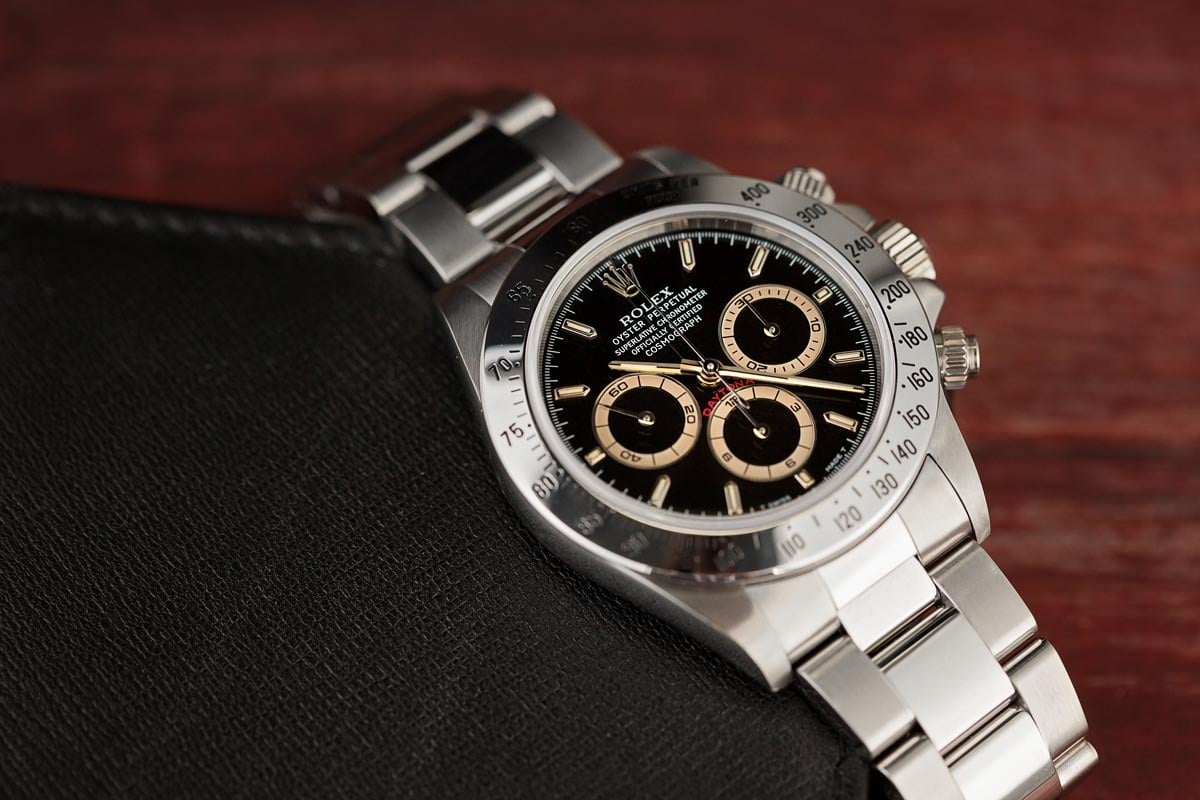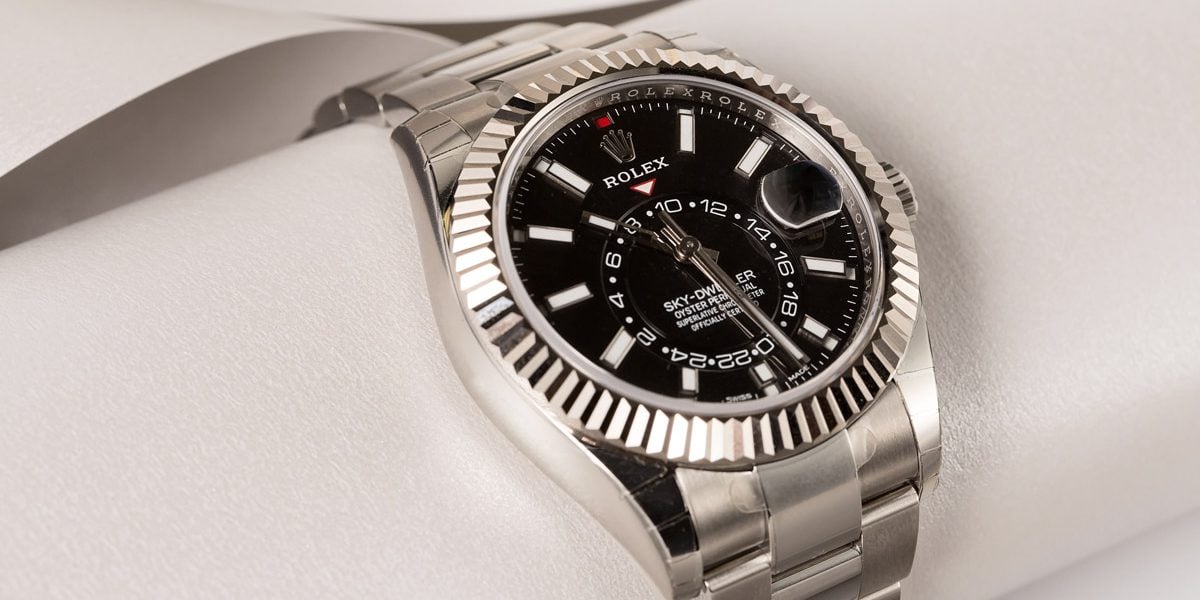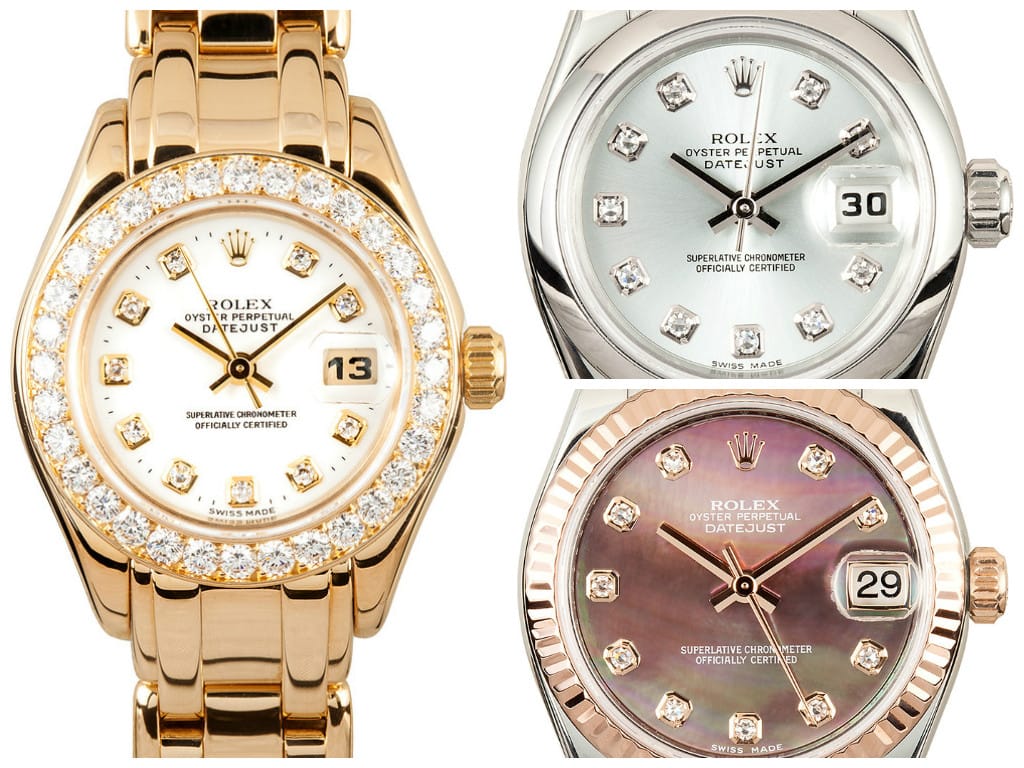Originally introduced in 1956 as the new flagship watch in the Rolex lineup, the Day-Date is one of Rolex’s most iconic and instantly recognizable designs. Only ever manufactured in either 18-karat gold or 950 platinum, the Rolex Day-Date embodies prestige and exclusivity, and was the first watch to simultaneously display both the date and the day of the week (spelled out in full), through windows in the surface of the dial. Today we will discuss the differences between reference 6611 and the newer day-date: the reference 228238.
The Rolex Day-Date gets its “President” nickname from its simple yet distinctive bracelet, which is the single most defining characteristic of its iconic, overall appearance. United States President, Dwight D. Eisenhower frequently wore a gold Rolex watch while in office, which due to its all-gold appearance, was commonly mistaken for a Day-Date. In reality, Eisenhower wore an all-gold Datejust; however, the “President” name stuck with Rolex’s Day-Date line and has since become the official name for Rolex’s semi-circular, three-link bracelet, as well as a ubiquitously used nickname for the entire watch itself.
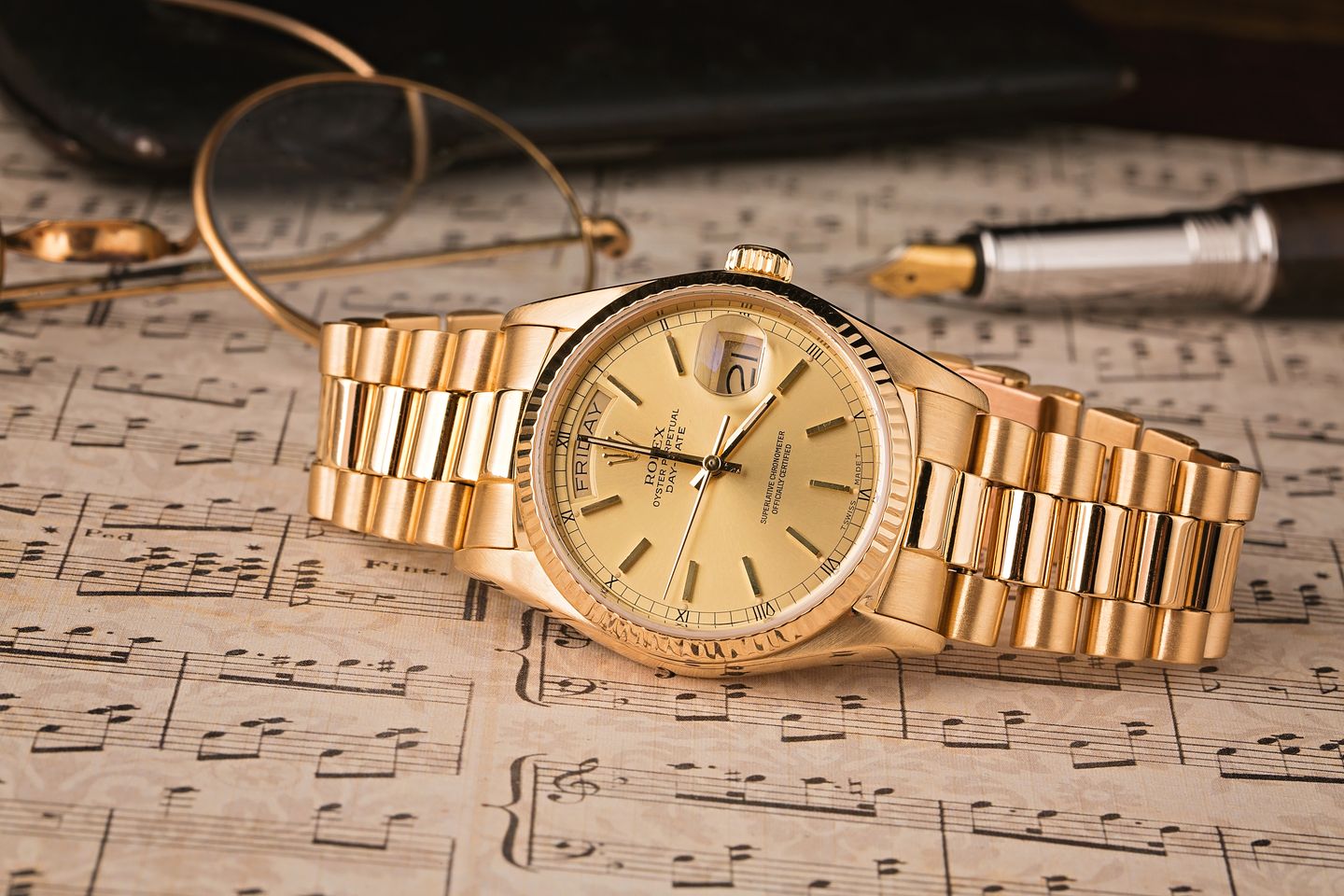
Then: The Reference 6611
The reference 6611 Day-Date was introduced in 1957 and was actually the second iteration of the Day-Date that Rolex released. The very first Day-Date was the reference 6511; however just one year after it made its debut, Rolex replaced it with the reference 6611. Production of the reference 6611 lasted only a few years, and by 1959, it had been replaced by the third generation Day-Date watches with the 1800-series. Still, 36 mm in diameter and near identical to its predecessor, reference 6611 was based around Rolex’s caliber 1055 movement, which featured a free-sprung balance and was significantly more accurate and reliable than the movement in the reference 6511.
Although the caliber 1055 movement did not allow for hacking or hand winding, it was a significant upgrade for the Day-Date line of watches. Due to the exceptionally accurate results of the caliber 1055 movement during its initial chronometer-tests, the reference 6611 earned the “Superlative Chronometer Officially Certified” designation and was the first Rolex watch to ever have this now-iconic text printed on its dial. Additionally, to accompany the upgraded movement, the reference 6611 was the first Day-Date to ever be available with its now-iconic President bracelet.
Now: The Reference 228238
Today the Rolex Day-Date is available in two different case sizes and with a number of different dial, metal, bezel, and bracelet combinations. Despite the growing number of options, the Day-Date is still exclusively craft from either 18k gold or platinum; no stainless steel or Rolesor (two-tone) options exist. The classic 36 mm Day-Date – a sweet spot for many wrists – is still manufactured; however, a larger version with a 40 mm case diameter was added to the Day-Date lineup in 2015 to cater to those who had been wanting a slightly larger version of the classic Rolex flagship watch.
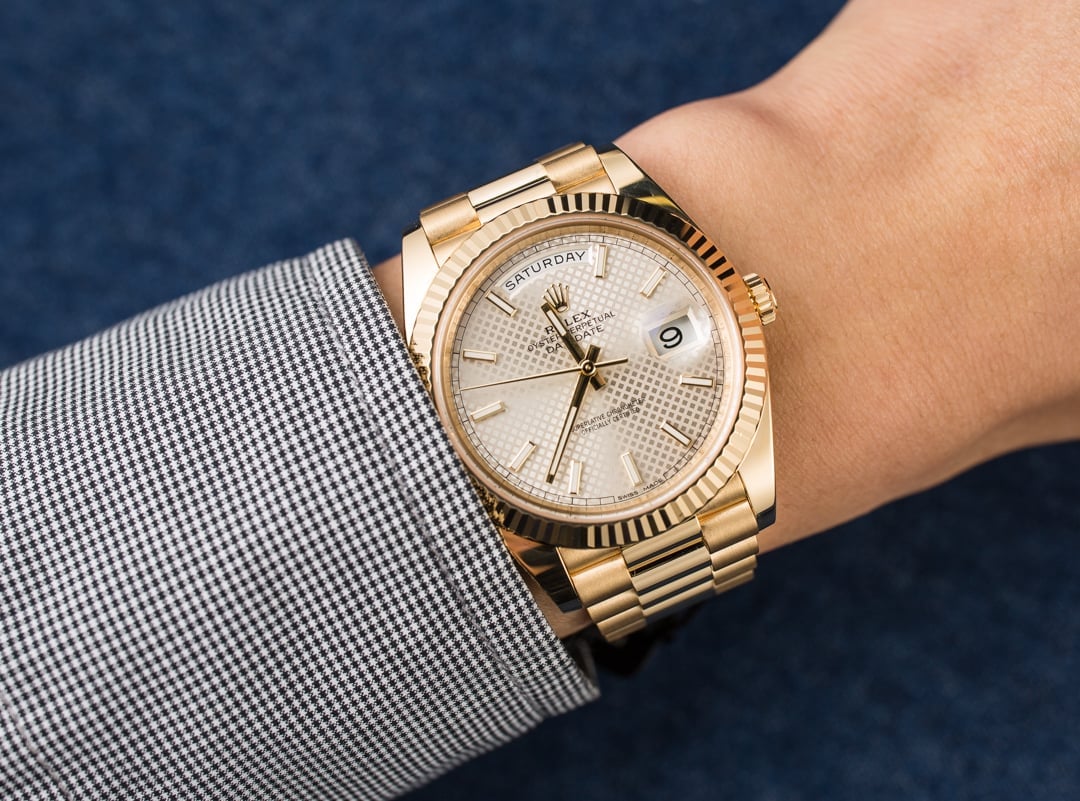
Although the new, 40 mm Day-Date exists in a number of different reference numbers and configurations, the reference 228238, with its fluted bezel, President bracelet, and entirely yellow gold construction, bears the closest resemblance to the original Day-Date watch from the 1950s. However the new, 40 mm version of the Day-Date is based around Rolex’s state-of-the-art, caliber 3255 movement, which boasts all of their latest and greatest technologies, such as a blue Parachrom hairspring, a high-capacity barrel, an efficiently optimized gear train, and newly redesigned “Chronergy” escapement.
Throughout the years, a gold Rolex watch has served as an internationally recognized symbol of success and personal achievement, and no watch better embodies this title than the classic Rolex Day-Date on its signature President bracelet. Despite a number of updates and upgrades that took place over the course of several generations, the overall aesthetic of the Day-Date has remained remarkably consistent and largely unchanged for well over half a century. The classic, yellow gold Day-Date is one of the world’s most iconic and widely imitated designs, and it has grown to become a true cornerstone offering for the entire luxury watch industry.
